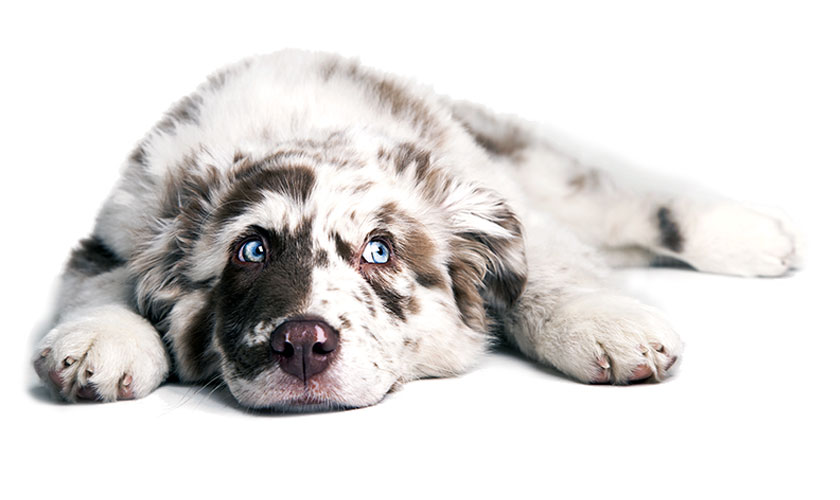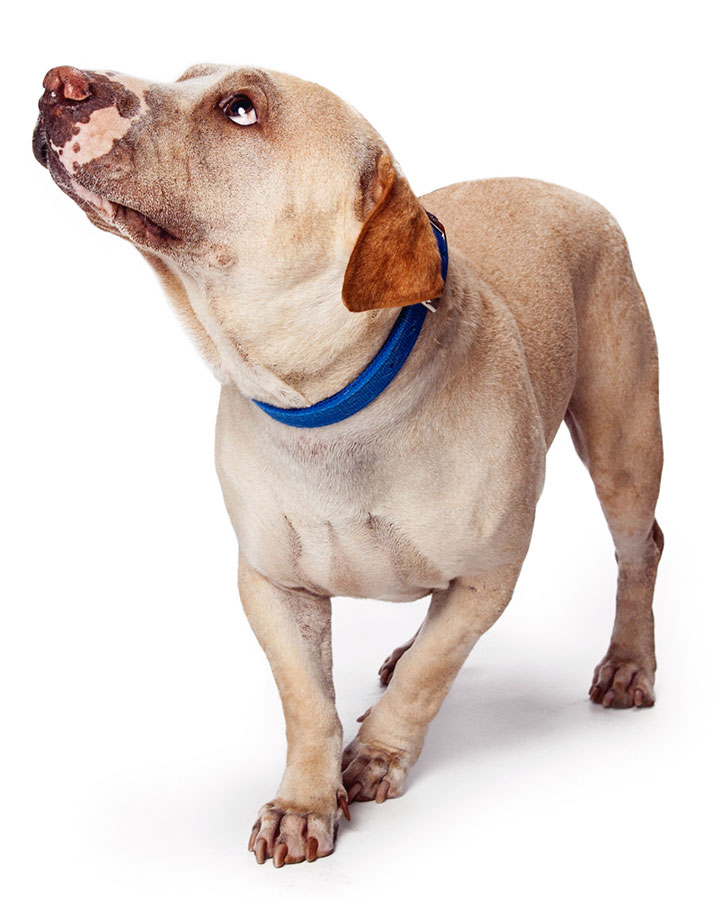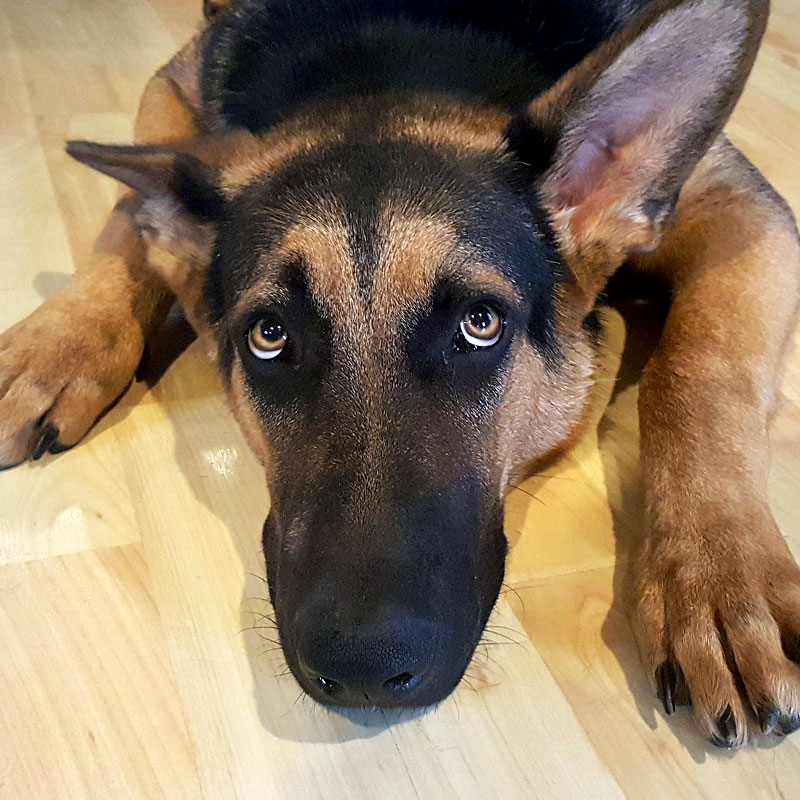
Isolation & Anxiety
Isolation Anxiety
When separated from people or other animals, the dog exhibits anxiety or stress-related behaviors. For example, as long as a person is home a dog will not be triggered or stressed. However, if the dog is alone and no one is home, the dog will start scratch and lick himself to calm down, though this action will cause rashes.
Separation Anxiety
When separated from a particular person or another pet, the dog exhibits anxiety or stress-related behaviors. For example, if a dog is very attached to his mom, if she leaves, he will become triggered and stressed, even if dad or other people are at home.
Dogs that suffer from severe isolation or separation anxiety will bark, howl, destroy surroundings and may try to escape their crate, yard or home. It’s important to get management and training solutions implemented as soon as you detect the anxiety because anxious behaviors usually do not improve with age, they usually escalate.
As certified Los Angeles dog trainers in West LA, we’ve worked with many dogs suffering from isolation and separation anxiety. It’s not the easiest behavior to modify, but it can be done. Give us a call today!
Causes of Fear, Phobias and Anxiety in Dogs
Any physical or mental trauma (real or perceived), illness or painful physical condition increases anxiety and contributes to the development of fears, phobias, and anxieties. Some of the causes of fear, phobias, and anxieties include, but are not limited to the following:
- Fear from a traumatic experience; the dog may have been forced into an unfamiliar and frightening experience
- Dogs that are deprived of social and environmental exposure until 14 weeks of age may become habitually fearful
- The dog may have a history of inability to escape or get away from the stimulus causing the phobia and panic, such as being locked in a crate
- Separation anxiety: a history of abandonment, multiple owners, rehoming, or prior neglect are common experiences; exacerbating the condition may be that the dog has been often abandoned or re-homed because of separation anxiety.
- Most fears, phobias, and anxieties can often be determined at a young age (even at 4-6 weeks old) if we know what to look for. Additionally, many anxious and fearful tendencies develop around 12 to 36 months of age. A profound form of fear and withdrawal of unknown cause occurs at 8 to 10 months of age. Whenever an anxious or fearful response is triggered, it’s important to start working with the dog immediately to decrease its reactivity.
- Old-age-onset separation anxiety is not uncommon and often results in a decline in thinking, learning, and memory in elderly dogs.

Diagnosis of Fear and Anxiety in Dogs
We recommend a visit to your veterinarian to have your dog assessed for fear and anxiety. As Los Angeles dog trainers, we do not diagnose conditions — we do assess behavior and your dog’s responses to various triggers. Listed below are a few.
Your veterinarian will first want to rule out other conditions that might be causing the behavior, such as thyroid conditions, injuries, etc. Veterinarians usually run urine, blood and other standard tests.
If your veterinarian diagnoses a fear, anxiety, or phobia, a prescribed medication may be a great idea. Your vet will most likely make recommendations based on your individual dog regarding the fear and anxiety triggers. At Canine Path, our West LA puppy and dog trainers like to work with veterinarians to develop a training and behavior modification plan. As trainers, we can come to your home, assess your dog in his environment/other appropriate environments, and help owners implement training and behavior modification protocols.
Training and behavior modification need to be implemented by the owner. You will need to teach your dog to relax in a variety of environmental settings. Avoid reassuring the dog when it is in the midst of experiencing fear or panic — the dog may interpret this as a reward for its behavior. Encourage calmness, but do not reinforce the fear reaction. Remember that not all dogs are calmer when crated. Some dogs panic when caged and will injure themselves if forced into confinement. Absolutely avoid punishment for behavior related to fear, phobia, or anxiety.
In our experience dogs with severe anxieties, fear and phobias when on the right medication and receive appropriate training, management, and behavior modification can make great improvements
Solutions for Anxious, Fearful Behaviors
Desensitization and counter-conditioning are the most effective training techniques if fear, phobia, or anxiety is treated early. Obtaining the expertise of dog trainer in Los Angeles experienced with reactive, fearful or anxious dogs familiar with these types of behavior problems can be crucial to helping your dog.
When we work with a reactive dog, the goal is to decrease the reaction to a specific stimulus (such as lunging at motorcycles).
- Desensitization is the repeated, controlled exposure to the stimulus that usually causes a fearful or anxious response in such a way that the dog does not respond with the undesirable response. With repeated efforts, the goal is to decrease the dog’s undesirable response.
- Counter-conditioning is training the dog to perform a positive behavior in place of the negative behavior (in this case, fear or anxiety). In essence, we work your dog below his threshold (the point where he becomes anxious or fearful). By working with your dog on a regular basis in a low-stress environment we can.
For example, when teaching your dog to sit and stay, when your dog performs appropriately you can reward him with his favorite treat or toy. Then, when your dog is in a situation where it might show the undesirable response, have it sit and stay. The signs involved in an oncoming anxiety attack are subtle; learn to recognize the physical signs associated with the fears, phobias, and anxieties and head the behavior off before it has a chance to take over your dog’s behavior.

Prevention of Fear and Anxiety in Dogs
In 2009, the American Veterinary Society of Animal Behavior (AVSAB) released a position paper outlining the importance of puppy socialization before the puppy reaches 12 to 16 weeks old. The AVSAB encourages owners to take their pets to puppy classes as early as possible, even before puppies have completed their full vaccination series. Socializing your puppy with gentle, well cared for, vaccinated friendly dogs will help your puppy learn to properly interact with other dogs at a young age. Early and continued socialization should continue to yield pleasant, friendly interactions with other dogs throughout his lifetime.
According to Dr. R.K. Anderson, “the risk of a dog dying because of infection with Distemper or Parvo disease is far less than the much higher risk of a dog dying (euthanasia) because of a behavior problem.” For more information as to why this is so important, click here.
Puppies and dogs that are deprived of social and environmental exposure until 14 weeks of age may become habitually fearful, which can be avoided with proper exposure and interactions with people, dogs, and environmental stimuli during this formative time.
If you have adopted an adult or older dog that is displaying fearful, anxious behaviors — we recommend contacting a Marina Del Rey dog trainer and a veterinarian for help.


